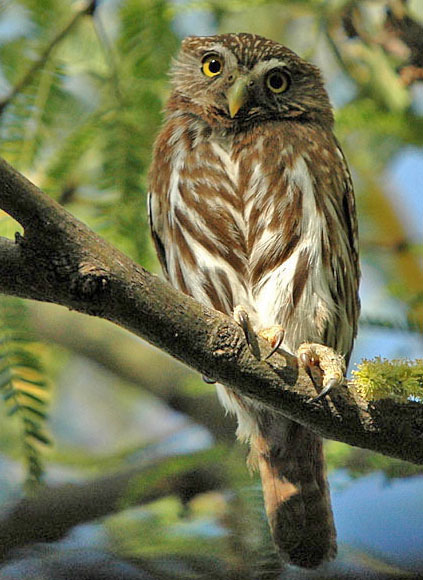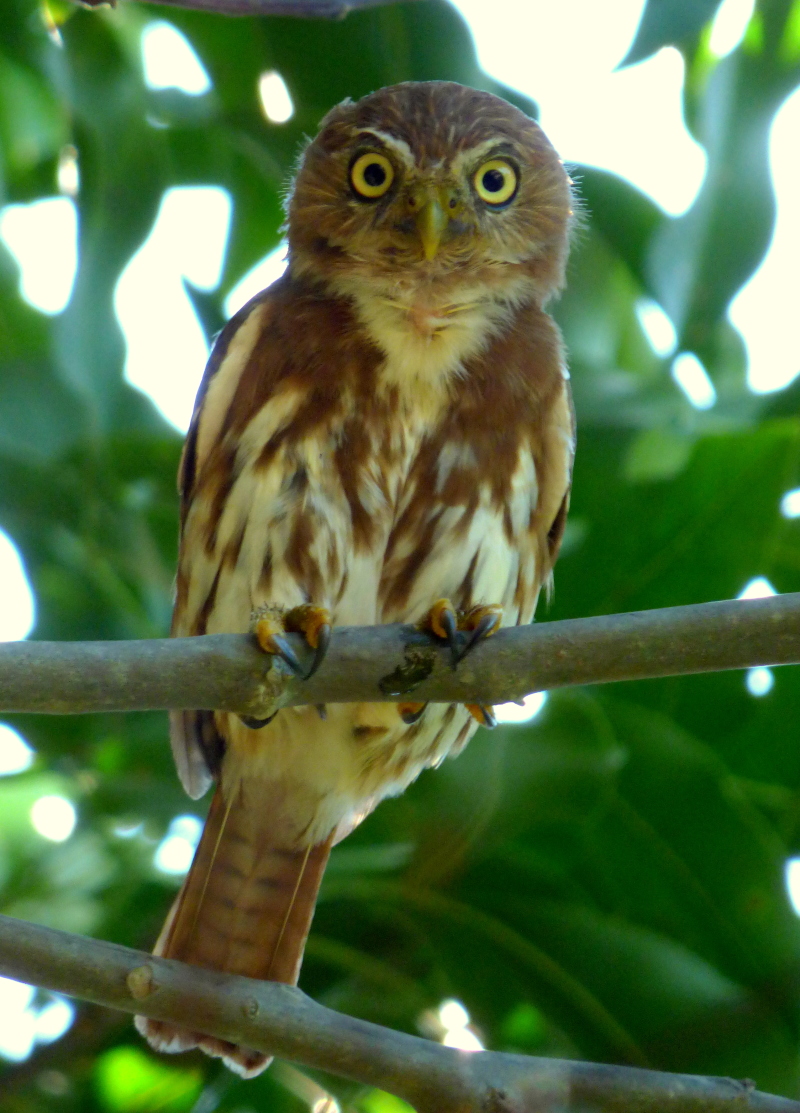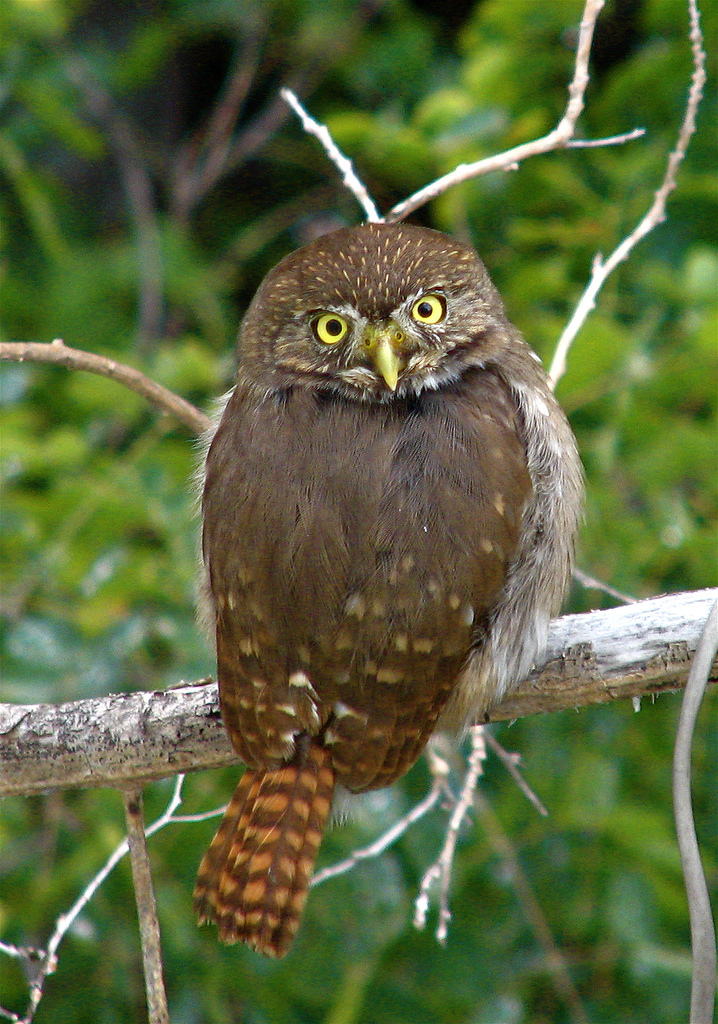Colours
Distinguishing features
It is small and stocky with disproportionately large talons. The crown has elongated white/buff spots or streaks, the wing coverts have white spots, and the underparts are heavily streaked white. There are prominent white supercilia above the facial disc. There are two eye spots on the nape.
Otherwise, its overall color is highly variable, ranging from grey-brown with a black-and-white barred tail to rich rufous with a uniform rufous tail. Sexes are similar with females slightly larger and often more reddish. (Wikipedia)
Size
- Up to 18 cm (Length of specimen)
Wingspan
- Up to 41 cm
Synonyms
Distribution
Distribution and habitat preferences
It in south-central Arizona in the United States, south through Mexico and Central America, to South America intoBolivia, Paraguay and Argentina.
In Central America and South America, it is the most widely distributed pygmy owl and is probably one of the most numerous owl species in those areas. It is found in a wide range of semi-open wooded habitats in these areas. (Wikipedia)
Audio recordings
Had been whistling for Ferruginous Pygmy owl as part of the CBC, this bird was extremely responsive and followed us up canyon as we would try to leave it behind and attract other species.
© David Vander Pluym
(source)
Chronotypes
Diet
It hunts a variety of birds, lizards, mammals, and insects. (Wikipedia)



